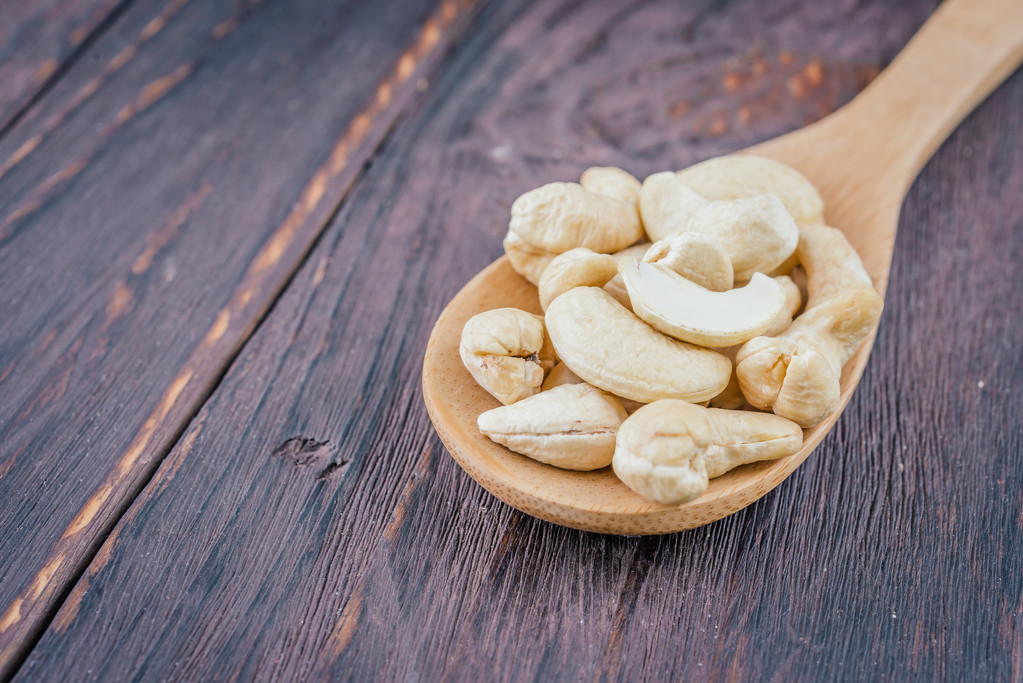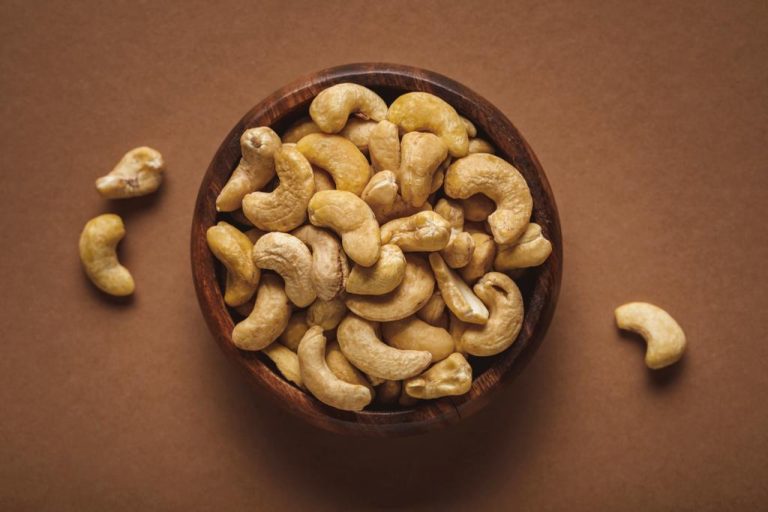As healthy and tasty as cashew nuts are, there are good reasons why you should take a close look when buying the healthy nuts. You can find out everything you need to know here.
Cashews: No nuts, but kernels
From a botanical point of view, cashew nuts are not nuts: they are the kernels of the cashew tree fruit. This tree, up to 15 meters high, forms pear-shaped, thickened fruit stalks, which are referred to as cashew apples, but are only pseudofruit. Because unlike all other fruits, they do not carry their seeds inside. Instead, the actual fruits of the tree, the kidney-shaped cashew nuts, grow at the lower end of these fruit stalks. Botanically, they belong to stone fruit. The cashew nut, which is about two to three centimeters in size, is then located in the wooden shell of the stone fruit.
The cashew tree belongs to the sumac family and originally comes from Brazil. In the meantime, however, it is also at home in India, Tanzania, Kenya and Mozambique. There the cashew apples are traditionally processed into juice, jam or schnapps for the domestic market, while the cashew nuts in particular are prepared for export all over the world.
Small kernels with a lot of power: cashews are so healthy
Cashew nuts are not only popular because of their mild, nutty, slightly buttery aroma and their pleasantly soft yet crunchy consistency. They are also rich in vital substances and nutrients:
Cashew nuts contain a lot of high-quality vegetable protein. There are 18 grams of protein in 100 grams of seeds. Cashew nuts are a very good source of protein, especially for people who do not eat animal proteins.
They contain many unsaturated and polyunsaturated fatty acids. These have a positive effect on the cardiovascular system and can help regulate high cholesterol levels. Compared to other nuts, however, cashew nuts are relatively low in fat and therefore have fewer calories.
Cashews are very good sources of magnesium and phosphorus. Magnesium and phosphorus are important minerals for our muscles, nerves, heart, teeth and bones.
They contain a lot of tryptophan. This is an amino acid from which the body produces the messenger substance serotonin, which is also known colloquially as the happiness hormone. Among other things, it has antidepressant, mood-enhancing, relaxing and sleep-inducing effects.
Cashew nuts have many B vitamins. A lack of B vitamins can result in tiredness, exhaustion and difficulty concentrating.
From the tree to the ready-to-eat cashew nut: a complex process
Cashew nuts are more expensive than many other types of nuts and kernels. On the one hand, this is due to the fact that only one core is formed per cashew apple. On the other hand, harvesting and processing are very complex:
Harvest: When the cashew apples are ripe, they fall to the ground by themselves. However, many cashew farmers do not wait for the ripening time because the fruit that falls from the tree can spoil very quickly. Instead, the cashew apples are picked unripe from the tree. This means that the cashew nuts are also unripe on the market, which affects the quality.
Drying: After harvesting, the cashew nuts are removed from the cashew apples and then dried first. Traditionally, they are laid out in the sun for a few days, but now the majority are mechanically dried at high temperatures.
Roasting: When the cashew nuts are dried, their shell must be cracked open and removed as they contain a toxic oil. The nuts are roasted, which affects the quality depending on the process. Sometimes they are gently dissolved under steam, but mostly exposed to temperatures of 200 degrees Celsius in roasting kettles, which reduces the quality. Cashew nuts in raw food quality are very rare because the processing is much more complex and special.

More than a snack: You can make this with cashews
In view of the problematic background and the poor ecological balance, you should buy cashew nuts as rarely as possible, but then buy them fairly traded and in organic quality. Then cashews are not only a pleasure as a snack between meals, as a topping for salads and as an ingredient in curries:
Vegan cream or milk: To do this, the seeds must first be soaked in water for at least an hour and then mixed or pureed. Depending on how thick you want the result to be, you add more water for a milk alternative and less water for a cream. Of course, the latter cannot be opened, but it is still ideal for garnishing cakes and desserts. You can use the milk to bake, cook or prepare your muesli.
Raw cakes: You can mix or puree a cream from soaked cashew nuts (without the soaking water) and season with lime and liquid sweetness. The cream can be spread on a cake base consisting of a mixture of ground nuts, seeds or seeds and chopped dried fruit. In the tart tin, this cake needs to be frozen in the freezer and thawed before eating. This is how a semi-frozen cashew cake is made.
Vegan cashew cheese or yoghurt: In the supermarket you can now find vegan cheese and yoghurt alternatives that do not contain soy and are based on cashews. This is of course a welcome development for those who do not eat milk or soy. Tip: To reduce waste, you can also make vegan cashew cheese yourself.

